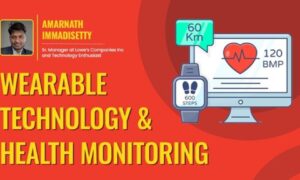Wearable technology has come a long way since its inception, transforming from simple gadgets to sophisticated devices that have integrated seamlessly into our daily lives. These wearable innovations have reshaped industries, improved healthcare, and changed the way we communicate and interact with our surroundings. In this article, we will explore the evolution of wearable technology and highlight ten key milestones that have played a pivotal role in shaping this dynamic industry.
Introduction
The First Digital Watch (1972)
The journey of wearable technology began with the release of the Hamilton Pulsar, the world’s first digital watch, in 1972. While it may seem rudimentary by today’s standards, this invention marked the initial foray into the world of wearables, showcasing the potential for combining technology with fashion.
Bluetooth Headsets (1999)
Bluetooth headsets revolutionized the way we communicate on the go. The introduction of the Bluetooth technology allowed users to connect their headsets to mobile phones wirelessly, eliminating the need for cumbersome wires and enabling hands-free communication.
Fitbit Launch (2008)
Fitbit’s launch in 2008 marked a significant milestone in the fitness tracking industry. These wearable devices allowed users to monitor their physical activity, heart rate, and sleep patterns, encouraging a healthier lifestyle. Fitbit’s success paved the way for a plethora of fitness wearables that followed suit.
Google Glass (2013)
Google Glass, despite its relatively short-lived existence in the consumer market, had a profound impact on the wearable tech industry. It introduced the concept of augmented reality (AR) glasses, sparking interest in smart glasses with heads-up displays and potential applications in various fields, from medicine to aviation.
Apple Watch (2015)
The Apple Watch, introduced in 2015, was a game-changer for the wearable industry. It seamlessly integrated with iPhones, offering users a wide range of features, from health monitoring to mobile payments. The Apple Watch’s success set a high standard for smartwatches, encouraging competition and innovation in the market.
Virtual Reality Headsets (2016)
Virtual reality (VR) headsets like the Oculus Rift and HTC Vive brought immersive experiences into the mainstream. These devices provided users with a new way to consume entertainment, play games, and even explore virtual environments for educational purposes.
Healthcare Wearables (2017)
The healthcare sector witnessed a major transformation with the rise of healthcare wearables. Devices like the ECG-capable Apple Watch and glucose-monitoring wearables have enabled individuals to monitor their health more proactively and share crucial data with healthcare professionals for remote diagnosis and treatment.
Smart Clothing (2019)
Smart clothing, such as sensor-embedded shirts and athletic wear, has gained momentum in recent years. These garments can monitor vital signs, track physical performance, and enhance sports training, making them popular among athletes and fitness enthusiasts.
Neuralink (2020)
Elon Musk’s Neuralink venture made waves in the wearable technology industry by delving into the world of brain-machine interfaces (BMIs). While still in the early stages, Neuralink’s work holds the promise of allowing humans to control devices directly with their thoughts, opening up possibilities for those with disabilities and advancing human-computer interaction.
The Rise of Smart Eyewear (2021)
Smart eyewear, like the Amazon Echo Frames and Facebook’s Ray-Ban Stories, represents the latest frontier in wearable technology. These stylish glasses can make calls, take photos, and offer voice-assisted AI, further blending the lines between fashion and function.
Conclusion
Wearable technology’s evolution, marked by milestones from basic digital watches to smart eyewear, has transformed our lives. As technology advances, we expect exciting innovations that will shape our future in ways we can’t fully understand.



































